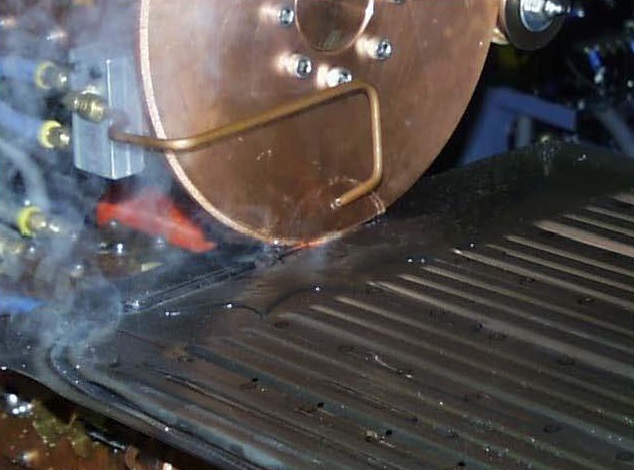Seam welding is a power intensive process. Especially with a fuel tank which must be leak proof. The welds must overlap the full perimeter of the tank. Depending upon the material and its thickness the power will vary. Consequently, the weld schedule and heat will vary.
In some applications flood water cooling may not be necessary. In other applications flood water cooling will be necessary. The amount of water desired for flood cooling could vary greatly from one liter/minute to many liters/gallons of water/minute.
• Yes, there will be evaporation but it likely will be minimal compared to the water flow.
• Yes, one should try to avoid getting water into the fuel tank.
• The cooling flood water can be recirculated and reused if prevented from building up too much heat.
• Make up water may be necessary to cover losses and evaproation.

SEAM WELDER WITH FLOOD COOLING
Every application is different and every product has its own specifications to build to. This dictates the seam welding schedule and how much cooling will be required. The specification cannot be offered from this blog.
References: RWMA – RWMA Resistance Welding Manual 4th Edition

